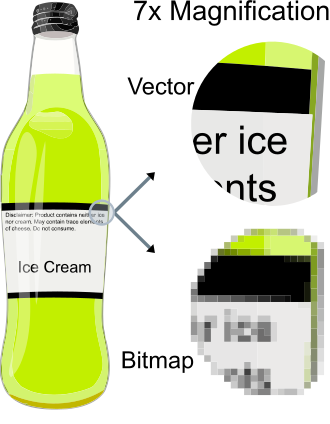
Vector art is ideal for printing. Since the art is made from a series of mathematical curves, it will print very crisply, even when resized.[4] For instance, one can print a vector logo on a small sheet of copy paper, and then enlarge the same vector logo to billboard size and keep the same crisp quality. A low-resolution raster graphic would blur or pixelate excessively if it were enlarged from business card size to billboard size. (The precise resolution of a raster graphic necessary for high-quality results depends on the viewing distance; e.g., a billboard may still appear to be of high quality even at low resolution if the viewing distance is great enough.)[5]
If we regard typographic characters as images, then the same considerations that we have made for graphics apply even to the composition of written text for printing (typesetting). Older character sets were stored as bitmaps. Therefore, to achieve maximum print quality they had to be used at a given resolution only; these font formats are said to be non-scalable. High-quality typography is nowadays based on character drawings (fonts) which are typically stored as vector graphics, and as such are scalable to any size. Examples of these vector formats for characters are Postscript fonts and TrueType fonts.
For more information about Vector Graphics visit Wikipedia- Vector Graphics.
From Wikipedia, the free encyclopedia
